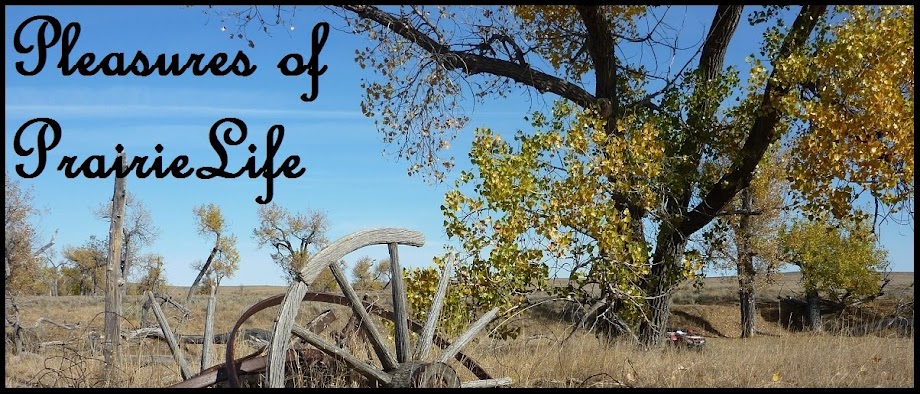My favorite breakfast food is the egg. There are just so many ways to cook it. Scrambled, hard boiled, fried, over-easy, poached, baked, the possibilities go on and on! In her book, Real Food for Mother and Baby, Nina Planck says that eggs are the next closest thing to the perfect protein for humans, right after human breastmilk. We eat at least 5 eggs most days at our house. This is how we are able to eat so many eggs....
One of the great things about living in the country is it's really no big deal to have some laying hens. You already have the space, so they're not right in your backyard. In fact, I'm not really sure how city people can raise chickens in their backyards, since the chickens will destroy the grass. They either need to be closely managed, a la Joel Salatin, or have lots of space to run around so they don't cause so much destruction:

We feed our chickens table scraps, corn, and leftover creep feed. Creep is what we put out for the calves to munch on, to get them started weaning. We also make sure they have water. The chickens always run to us when they see us coming near. They flock around the vehicle, waiting for some tasty vegetable scraps! Here they are running to greet me (and trying to get to the food before everyone else).
That little shed on the left side of the photo is the chicken house. We keep the door on the front part closed all the time. The front part has a window, a light to keep them warm in the winter, some bunks for them to lay their eggs in, a rack for them to perch on, and a little doorway (only big enough for a chicken to fit through) that leads to the exposed part of the house. The exposed part is a big cage. It also has a ladder-type rack for them to perch on. We keep the door to the cage open all day. The chickens usually go inside at night without any coaxing. If we are outside at twilight, we try to remember to lock the cage so predators can't get to the chickens. Dogs, cats, coyotes, foxes, and weasels are all threats to the chickens, but the most prevalent chicken killer is the " 'coon" (raccoon). In the winter, the chickens like to stay inside for warmth. We keep the chicken house lined with straw. I am usually the one who cleans it, although I do it less than I care to admit! Fortunately they have plenty of fresh air and wide open space to run around and do their business.

In the picture to the left, the chickens and our two turkeys are scrambling to eat every last tasty morsel of table scraps that I just dumped on the ground. Notice there is no grass on the ground. That's thanks to the chickens!
I always try to bring some food for them when I come to collect eggs. Then they are distracted and don't get underfoot while I'm gathering the eggs. Most days they produce 12 to 18 eggs.
Ah, fresh chicken eggs, washed and ready to cook. I've read you're not supposed to wash your eggs until right before you cook them, but I prefer to wash enough for a week at a time so I'm not doing it every day. And yes, I think you do have to wash your eggs, unless you like a little chicken feces in your breakfast burrito.

Yummm, delicious fried eggs. Notice how vibrant orange the yolks are? That's because they come from chickens that run around outside, eating green grass and bugs. They live the way they were meant to, not cooped up in some overcrowded cage. The bright orange color means our eggs have lots of vitamins and good fats. After eating these nutrient powerhouses day after day, I am shocked at the dull, sickly looking things that pass for eggs in most peoples' homes. I am so thankful for our laying hens!
Do you know where your eggs come from?


























































